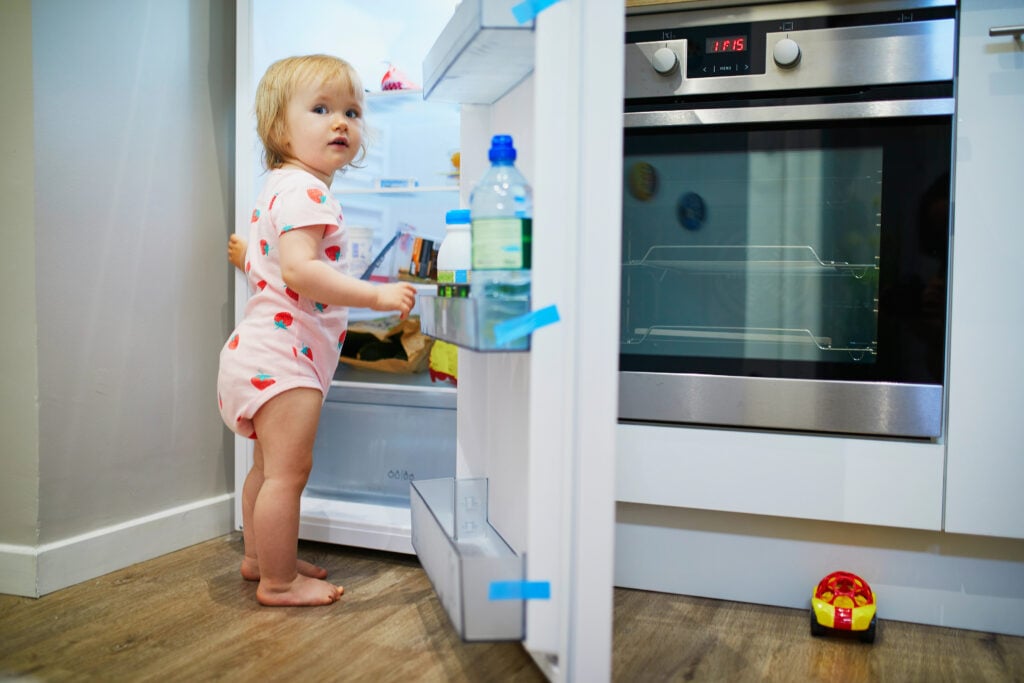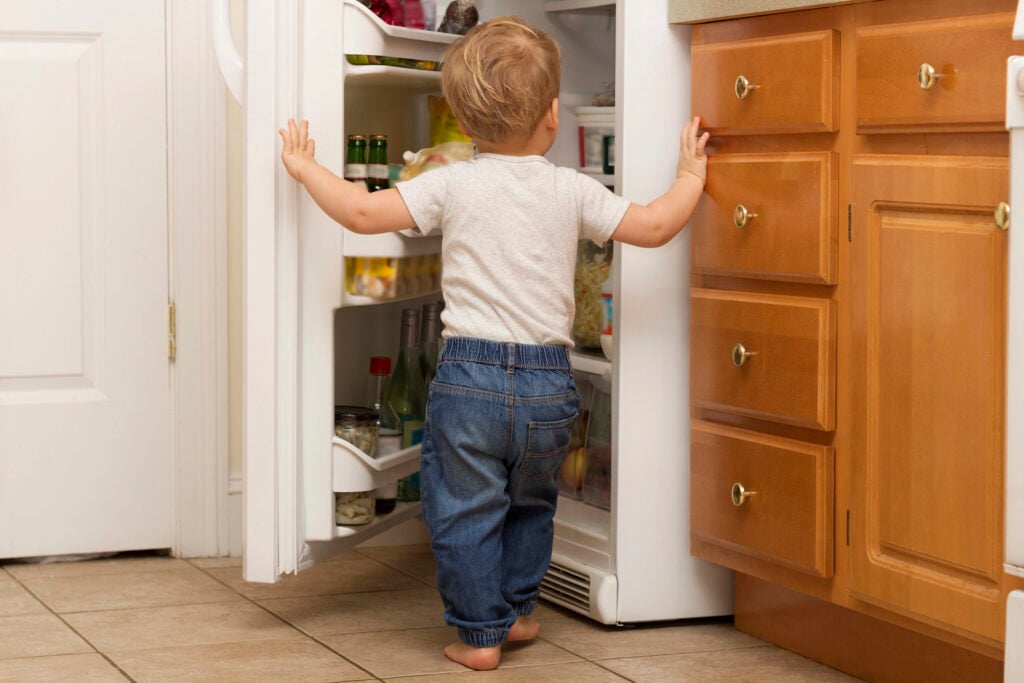
My son was 5 years old when I bought the refrigerator lock, and I felt terrible about it. I asked for advice from friends, fellow moms, and a doctor before taking the step.
However, I reached a breaking point after waking up to find something cold and wet under my blankets and discovering a soda bottle tucked beside me. I’m pretty sure he was sleepwalking, although we were never able to confirm it.
I’ve since learned that I’m far from the first or last mom to agonize about this exact decision, and the answer is a balancing act.
Middle Of The Night Refrigerator Raids

At age five, my son had probably been slipping out of bed in the middle of the night for a year or two. In the morning, he wouldn’t remember it, and I rarely caught him in the act. Usually, I just saw the results.
Still, those outcomes didn’t seem to indicate a lot of conscious intent. Once, when there were neither sodas nor juice bottles in the fridge, he instead retrieved a bottle of ketchup and took it back to his own bed. Another time, he removed a soda, but emptied it on the carpet instead of drinking it. Then, of course, in the previously mentioned incident, he didn’t even take the bottle to his own bed, but hid it in mine!
That’s not mentioning the daytime sneaking, which included fun little incidents like deciding he’d like to eat a boiled egg, waiting for me to leave the room, and helping himself to one and cracking it on the table. The problem? All the eggs in the fridge were raw.
At this point, I gave in and bought a lock, with the understanding that I would only use it as necessary and dispose of it as soon as possible.
Other Parents Have Similar Stories
The more I listened, the more I heard similar stories from other parents.
Their kids woke up before the adults and decided to “make breakfast” — by which I mean, combining eggs and other fun refrigerated ingredients on the nearest available carpet. Or they helped themselves to frozen chicken nuggets. Or they tried to pour their own milk, to disastrous results.
Then there are other risks, like a child dropping a heavy jug of milk or, worse, something in a glass bottle. Parents fear their little one accessing hot sauce or an adult beverage. Alternatively, they may access raw foods that are unsafe to consume without cooking.
These stories tend to happen when a parent is still asleep, or when they’ve stepped away to the bathroom, or when they’re changing a younger sibling’s diaper or waiting for an older sibling at the bus stop, or almost any time when the fridge is unprotected.
In short, there are several compelling reasons to prevent your child from opening the refrigerator without supervision, and for some kids, that may involve installing a lock.
The Risk Of Unhealthy Relationships With Food
Around 1 in 10 adults in the U.S. has a diagnosed eating disorder, and a much higher number experience some disordered eating habits or unhealthy relationships with food.
These days, we know what many of our parents didn’t know: that rules like “clean your plate” and extreme limits on snacks and treats tend to contribute to these issues, and cause more health problems in the long run.
Now, in our desperation to do better, it’s easy to get anxious about the ‘right’ way to set rules and limits around food. Where is the line drawn to encourage healthy eating and appropriate snacking (which can surge during a growth spurt) without it backfiring? This is especially challenging if you are an adult still working out your own relationship with food, but it can be confusing for anyone.
The good news is that you can absolutely incorporate a fridge lock into this balance if needed.
How Can I Help Encourage A Healthy Relationship With Food?

Setting strict rules about what your child can eat is a less-effective method here than teaching your child a few important tools.
UNICEF recommends teaching proper portion sizes and encouraging your kids to understand that sweet snacks and treats are for special occasions, not everyday consumption. They advise encouraging your child to eat a piece of sweet fruit instead of a sugary cereal, and focusing on getting your child involved in fun physical activities every day, rather than becoming the snack police.
However, protecting your child is your responsibility, and in situations where you see that free access to the fridge poses a risk to your child, you can take protective measures.
To ensure your child still has safe access to healthy foods, consider options such as keeping a fruit bowl on the table, providing a sippy cup with cool, fresh water that your child can access at any time, or having a cabinet or bin with approved snacks available for free.
Also, fridge locks should be used only when needed, and removed when your child can be trusted to access the fridge safely. They should never be used to deprive a child of food, only for safety purposes.
Most importantly, keep an open dialogue with your child! Make sure to talk (even if you don’t think they’re old enough to understand) about how important it is to ask a grown-up for help with the fridge and to discuss safety.
Keep It Age-Appropriate
Fridge locks vary in style, but the most basic ones consist of two pieces that attach to the door and side of the fridge with adhesive.
Most are easy to open (think more of a buckle or a snap than a key or combination) and really only prevent the door from being tugged open by someone who can’t reach the strap. While there are heavier-duty options available, intended for use with older children with developmental delays or adults with dementia, the basic ones will likely meet your needs for most toddlers and preschoolers.
That said, the adhesive can wear out over time, especially if your persistent little one is jumping up and testing its limits every time you leave the room. Therefore, it’s a good idea to give it a test tug yourself now and then to ensure it’s still doing its job.

